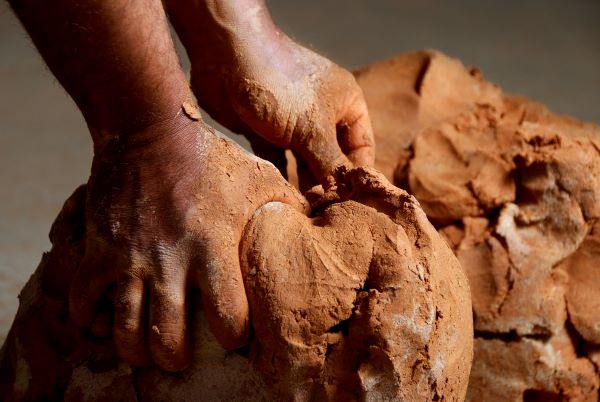Potter and Clay
By John McCoury
Roan Mt., Tennessee
This is the word that came to Jeremiah from the Lord: “Go down to the potter’s house, and there I will give you my message. So I went down to the potter’s house, and I saw him working at the wheel. But the pot he was shaping from the clay was marred in his hands; so the potter formed it into another pot, shaping it as seemed best to him.” Jeremiah 18:1-4 We have talked about the many things God uses to teach his people, these remarkable visual aids which appear from time to time in this book whereby God imparts lessons to this prophet. Jeremiah was sent down to the potter’s house, and there he saw three simple things, conveying to him a fantastic lesson. You may have observed the same things that Jeremiah did, for the art of making a pot has not changed through the centuries. The wheel is now turned by an electric motor, but that is about the only difference. Even this is still controlled by the foot of the potter. The clay is the same as it has always been. The potter is the same, with his capable hands, working to mold and shape the clay into the vessel he has in mind. What did Jeremiah see in this lesson? First, there was the clay. Jeremiah knew, as he watched the potter shaping and molding the clay, that he was looking at a picture of himself, of every man, and every nation. We are the clay. Both Isaiah and Zechariah, in the Old Testament, join with Jeremiah in presenting this picture of the potter and the clay.
In the New Testament, we have the voice of Paul in that great passage in Romans 9, reminding us that God is the Potter and we are the clay. So Jeremiah saw the clay being shaped and molded into a vessel. Then some imperfection in the clay spoiled it in the potter’s hand, and the potter crumbled it up and began anew the process of shaping it into a vessel that pleased him. Jeremiah saw the wheel turning constantly, bringing the clay against the potter’s hand. That wheel stands for the turning circumstances of our life, under the control of the Potter, for it is the potter’s foot that guides the wheel. The lesson is clear. As our life is being shaped and molded by the Great Potter, it is the circumstances of our life that bring us again and again under the potter’s hand, under the pressure of the molding fingers of the Potter, so that he shapes the vessel according to his will. Then, Jeremiah saw the potter. God, he knew, was the Great Potter, with absolute right over the clay to make it what he wanted it to be. Paul argues this with keen and clear logic in Romans 9: “Shall what is formed say to the one who formed it, Why did you make me like this? Does not the potter have the right to make out of the same lump of clay some pottery for special purposes and some for common use?” (Romans 9:20b-21) Of course, he has. The vessel is shaped according to the image in the potter’s mind. So Jeremiah, by watching, learned that an individual or a nation is clay in the Great Potter’s hands. He has a sovereign right to make it what he wants it to be. He has the skill and design to work with the clay and to bring it to pass. If there is some imperfection in the clay, something which mars the design and spoils the work, the potter simply crushes the clay down to a lump and begins again to make it yet a vessel according to his own mind.
Thank you, Father, for creating me and shaping me. I trust that you are sovereign in all that you do and that your purpose for me is good. What are three principles we may learn from the visual aid of potter and vessel? Are we learning to be grateful for the Potter’s molding of our earthly vessels?
______________________________________________
John McCoury is pastor of Evergreen Freewill Baptist Church in Roan Mountain, Tennessee, and the chaplain at Roan Highlands Nursing Center. You can read more good Christian news from John HERE.
______________________________________________







